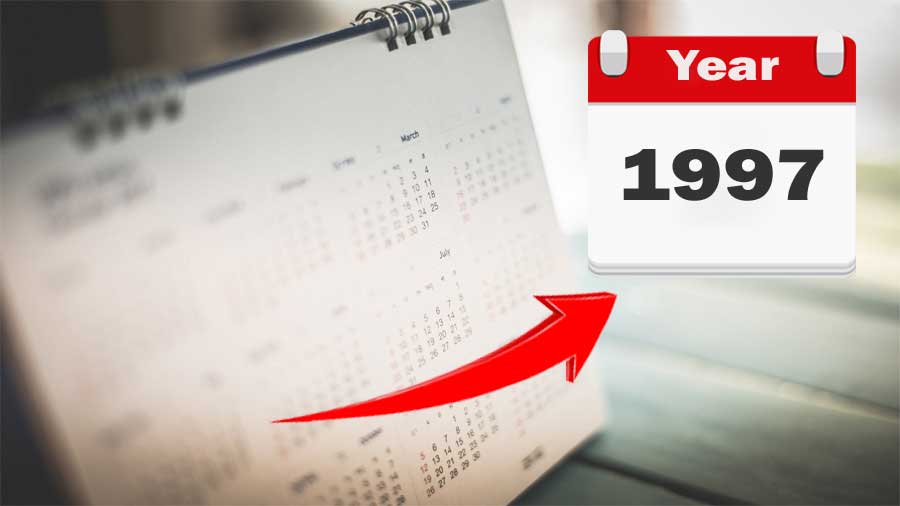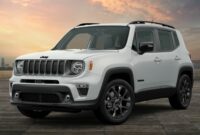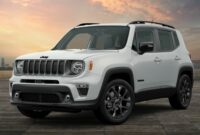1997 Jeep For Sale: Your Comprehensive Guide to Finding and Owning a Legend sale.truckstrend.com
The year 1997 holds a special place in the hearts of Jeep enthusiasts. It marked a pivotal moment for two of the brand’s most iconic vehicles: the ruggedly practical Cherokee XJ and the perpetually adventurous Wrangler TJ. More than two decades later, these machines aren’t just used cars; they are coveted relics of an era when simplicity, durability, and raw capability defined the American SUV. If you’re on the hunt for a "1997 Jeep for sale," you’re not just looking for transportation; you’re seeking a piece of automotive history renowned for its off-road prowess, aftermarket versatility, and timeless appeal. This comprehensive guide will navigate you through everything you need to know about acquiring and appreciating a 1997 Jeep, ensuring your journey from search to ownership is as smooth and exciting as a well-maintained trail.
The Enduring Allure of the 1997 Jeep
1997 Jeep For Sale: Your Comprehensive Guide to Finding and Owning a Legend
What makes a 1997 Jeep so desirable, even in an age of sophisticated, tech-laden vehicles? The answer lies in their unpretentious charm and robust engineering. The 1997 model year was particularly significant:
- Jeep Cherokee (XJ): The XJ platform, which ran from 1984 to 2001, is often hailed as one of the best SUVs ever made. The 1997 model year saw a refresh, including a revised interior, updated body molding, and improved electrical systems, while retaining its legendary unibody construction and the indestructible 4.0-liter inline-six (I6) engine. It offered a perfect blend of daily drivability and formidable off-road capability, making it a "go-anywhere, do-anything" vehicle without being excessively large.
- Jeep Wrangler (TJ): The TJ generation, introduced in 1997, was a revolutionary leap forward from its YJ predecessor. Most notably, it replaced the YJ’s leaf spring suspension with a coil spring setup on all four corners, significantly improving ride quality and handling while enhancing articulation for off-roading. The return of the iconic round headlights, combined with the proven 4.0L I6 engine option, cemented its status as a modern classic. The TJ brought unprecedented comfort to the Wrangler line without compromising its core identity as the ultimate open-air adventure machine.
Both models from 1997 offer simplicity in design, ease of maintenance, and a vast aftermarket support network, allowing owners to customize, repair, and upgrade with relative ease. This combination of factors ensures their continued relevance and high demand in the used vehicle market.
Key Considerations When Hunting for a 1997 Jeep
Finding the right 1997 Jeep requires diligence and a keen eye. Unlike newer vehicles, age brings specific challenges and points of inspection that are crucial for a successful purchase.

-
Rust is the Ultimate Enemy: Given their age and typical usage, rust is perhaps the biggest concern.
- Cherokee XJ: Inspect the unibody frame rails, floorboards (especially under the carpets), rocker panels, and rear hatch area. Severe rust on the unibody can compromise structural integrity.
- Wrangler TJ: Check the frame (especially near the control arm mounts and skid plates), body mounts, floorboards, and the area around the windshield frame.
- Solution: Be prepared to walk away from heavily rusted vehicles unless you’re a skilled welder or plan for a full frame-off restoration. Minor surface rust can often be addressed.


Drivetrain Health (The Legendary 4.0L I6): The 4.0L I6 engine is renowned for its longevity, often exceeding 200,000 or even 300,000 miles with proper maintenance.
- Engine: Look for oil leaks (rear main seal is common but not always critical), listen for abnormal noises (ticking, knocking), check coolant color (should be green or orange, not murky), and ensure no overheating issues. A healthy 4.0L should start easily and idle smoothly.
- Transmission: Test both automatic (AW4 for XJ, 32RH/42RLE for TJ) and manual (AX15 for XJ, NV3550 for TJ) transmissions. Ensure smooth shifts, no slipping, and proper engagement of all gears.
- Transfer Case: Engage 2WD, 4-High, and 4-Low. Listen for grinding or clunking. Check for leaks around the seals.
- Axles: Inspect for leaks around the differentials and listen for howling or grinding noises during the test drive.
-
Suspension and Steering:
- "Death Wobble" (Wrangler TJ): A violent, uncontrollable shaking of the front end, often triggered by a bump. While not unique to Jeeps, it’s a common concern. Inspect ball joints, tie rod ends, track bar, and control arm bushings for wear.
- General Wear: Check shocks, springs, control arm bushings, and leaf springs (if applicable for XJ rear) for signs of wear, sagging, or leaks.
-
Electrical Gremlins: While the 1997 XJ saw electrical improvements, older vehicles can develop issues. Test all lights, windows, wipers, HVAC controls, and dashboard gauges.
-
Modifications: Many 1997 Jeeps have been modified. Assess the quality of modifications:
- Are lift kits properly installed with correct geometry?
- Are aftermarket bumpers, winches, or armor securely attached?
- Were modifications done by reputable shops or a knowledgeable DIYer? Poorly executed modifications can cause more problems than they solve.
Understanding the Models: 1997 Cherokee XJ vs. 1997 Wrangler TJ
While both are "Jeeps," they cater to different needs and offer distinct experiences.
1997 Jeep Cherokee (XJ): The Practical Legend
- Key Features: Unibody construction, 4.0L I6 engine (often paired with the bulletproof AW4 automatic transmission), boxy design, comfortable seating for four.
- Benefits: Excellent balance of on-road comfort and off-road capability, very reliable, strong aftermarket support, more cargo space than the Wrangler, often more budget-friendly to acquire.
- Ideal For: Daily drivers who need space and utility, overland enthusiasts, mild to moderate off-roaders, those seeking a classic SUV aesthetic.
- Watch Out For: Unibody rust, potential for sagging leaf springs (rear), blend door issues for HVAC, occasional electrical glitches.
1997 Jeep Wrangler (TJ): The Uncompromising Adventurer
- Key Features: Body-on-frame construction, coil spring suspension (revolutionary for Wrangler), removable doors, fold-down windshield, soft top/hard top options. Available with 2.5L I4 or 4.0L I6.
- Benefits: Superior off-road articulation and ride comfort compared to previous Wranglers, iconic open-air experience, massive aftermarket for extreme customization, strong resale value.
- Ideal For: Dedicated off-roaders, weekend adventurers, those who prioritize the "Jeep lifestyle" and open-air driving, enthusiasts looking for a highly modifiable platform.
- Watch Out For: Higher price point, "Death Wobble," less practical for daily driving (limited cargo space, road noise with soft top), rust on frame and body mounts, higher insurance costs.
The Buying Process: A Step-by-Step Guide
- Research Thoroughly: Understand the specific model you’re interested in, common issues, and average market prices. Join online forums (e.g., CherokeeForum.com, JeepForum.com) to learn from experienced owners.
- Set a Realistic Budget: Factor in the purchase price, potential immediate repairs, insurance, and ongoing maintenance. Don’t forget registration and taxes.
- Where to Look:
- Online Marketplaces: Craigslist, Facebook Marketplace, Autotrader, eBay Motors. Be wary of scams; always inspect in person.
- Specialty Forums/Groups: Often the best place to find well-maintained examples from enthusiasts.
- Local Dealerships (Used Car): Less common for older models, but possible.
- Initial Contact & Questions: Before seeing the Jeep, ask:
- Why are you selling?
- What’s the maintenance history (records available)?
- Any known mechanical issues or warning lights?
- Has it been off-roaded heavily?
- Any rust or body damage?
- What modifications have been made?
- In-Person Inspection (Daylight is Key!):
- Walk around the vehicle: Look for consistent panel gaps, signs of accident repair, rust, tire condition, fluid leaks under the vehicle.
- Check the interior: Look for water damage, excessive wear, functionality of all electronics.
- Open the hood: Check fluid levels and condition, look for leaks, inspect belts and hoses.
- Get underneath: This is crucial for rust, suspension components, and drivetrain leaks. Bring a flashlight.
- The Test Drive:
- Start cold: Listen for unusual noises.
- Drive on various surfaces: Smooth road, bumps, turns.
- Test brakes (straight, no pulling), steering (no excessive play), acceleration.
- Engage 4WD (if safe to do so).
- Listen for clunks, rattles, or grinding.
- Pre-Purchase Inspection (PPI): This is non-negotiable for a 1997 Jeep. Take it to an independent mechanic specializing in Jeeps or off-road vehicles. Their professional eye can spot issues you missed and give you leverage for negotiation.
- Negotiation: Armed with your research and PPI findings, negotiate based on the vehicle’s condition. Be prepared to walk away if the price isn’t right or if the seller is unwilling to address concerns.
- Paperwork: Ensure the title is clear, matches the VIN, and is signed correctly. Get a bill of sale. Understand your local registration and tax requirements.
Tips for Successful Ownership
- Embrace the DIY: Many common repairs and maintenance tasks on a 1997 Jeep are relatively simple and can be done at home with basic tools. This saves money and fosters a deeper understanding of your vehicle.
- Join the Community: Jeep clubs, online forums, and local meet-ups are invaluable resources for advice, parts, and camaraderie.
- Regular Maintenance is Key: Stick to fluid changes, lubrication, and routine inspections to keep your vintage Jeep running strong.
- Budget for Unexpected Repairs: Even the most reliable vehicles need attention as they age. Set aside a small fund for future maintenance or unforeseen issues.
- Know Your Limits: Understand what your Jeep (and your skills) can handle off-road. Don’t push it beyond its capabilities without proper modifications and training.
Potential Challenges and Solutions
- Rust (Advanced): For severe unibody or frame rust, professional welding and fabrication might be necessary. Consider rust converters and undercoating for prevention.
- "Death Wobble": Often resolved by systematically replacing worn steering and suspension components (track bar, ball joints, tie rod ends, control arm bushings). Proper alignment is also crucial.
- Oil Leaks (4.0L Rear Main Seal): While common, it’s often a slow weep. Monitor oil levels. If significant, replacement is possible but labor-intensive.
- Cooling System Issues: Overheating can damage the 4.0L. Replace aging radiators, water pumps, thermostats, and hoses proactively.
- Finding Parts: While aftermarket support is strong, some OEM parts might be discontinued. Leverage online communities and salvage yards.
1997 Jeep For Sale: Estimated Price Guide
The price of a 1997 Jeep varies wildly based on model, condition, mileage, modifications, and region. This table provides a general estimation:
| Model | Condition (Key Factors) | Estimated Price Range (USD) | Notes |
|---|---|---|---|
| Jeep Cherokee (XJ) | Poor: Significant rust, major mechanical issues, non-running, salvage title. | $1,000 – $3,000 | Project vehicle, parts donor, or requiring extensive work. |
| Fair: Moderate rust, some mechanical issues, high mileage, needs TLC. | $3,000 – $6,000 | Daily driver with known flaws, requires immediate repairs/maintenance. | |
| Good: Minimal rust, runs well, minor cosmetic flaws, average mileage. | $6,000 – $10,000 | Solid daily driver or weekend warrior, well-maintained. | |
| Excellent: No rust, meticulously maintained, low mileage for age, original or tastefully modified. | $10,000 – $18,000+ | Collector-grade or highly desirable examples. Prices can exceed this for exceptionally clean or highly customized builds. | |
| Jeep Wrangler (TJ) | Poor: Significant rust, major mechanical issues, non-running, salvage title. | $3,000 – $6,000 | Project vehicle, parts donor, or requiring extensive work. |
| Fair: Moderate rust, some mechanical issues, high mileage, needs TLC. | $6,000 – $10,000 | Daily driver with known flaws, requires immediate repairs/maintenance. Often a good starting point for a build. | |
| Good: Minimal rust, runs well, minor cosmetic flaws, average mileage. | $10,000 – $15,000 | Solid daily driver or weekend off-roader, well-maintained. | |
| Excellent: No rust, meticulously maintained, low mileage for age, original or tastefully modified. | $15,000 – $25,000+ | Highly sought-after, especially 4.0L models. Prices for exceptionally clean or highly modified TJs (e.g., built for rock crawling) can reach significantly higher. |
Important Note: Prices are estimates and subject to market fluctuations. A pre-purchase inspection is crucial to assess the true value and potential repair costs of any specific vehicle. Mileage, trim level (e.g., Sport, Sahara, Country), 4WD system (e.g., Command-Trac, Selec-Trac), engine (2.5L vs. 4.0L), transmission (manual vs. automatic), and quality of modifications also significantly impact the price.
Frequently Asked Questions (FAQ) about 1997 Jeeps
Q: Is a 1997 Jeep reliable?
A: Yes, generally. The 4.0L I6 engine is known for its legendary reliability and longevity. However, like any 26+ year old vehicle, specific components will wear out and require maintenance. Proper care and proactive replacement of common wear items are key to sustained reliability.
Q: What’s the main difference between the 1997 Cherokee and Wrangler?
A: The Cherokee (XJ) is a unibody SUV offering more interior space and a more comfortable, car-like ride, making it better for daily driving and light-duty hauling. The Wrangler (TJ) is a body-on-frame, open-top vehicle designed primarily for off-road performance and the classic open-air Jeep experience, with less interior practicality.
Q: What should I look for regarding rust on a 1997 Jeep?
A: For the XJ, check the unibody frame rails (especially near the rear leaf spring mounts), floorboards, rocker panels, and around the rear hatch. For the TJ, inspect the frame (especially where control arms attach), body mounts, and floorboards. Surface rust is often manageable; extensive, structural rust is a major red flag.
Q: Are parts readily available for a 1997 Jeep?
A: Yes, very much so! Due to their popularity and long production runs, both the XJ and TJ have a massive aftermarket for parts, upgrades, and accessories. OEM parts might be harder to find for some specific components, but alternatives are usually plentiful.
Q: Can a 1997 Jeep be a daily driver?
A: Absolutely. Many owners daily drive their 1997 Cherokees and Wranglers. The XJ is generally more comfortable for daily commuting. The TJ can be a daily driver, but be prepared for a less refined ride, more road noise (especially with a soft top), and less cargo space.
Q: What is "Death Wobble" in a Wrangler?
A: "Death Wobble" is a violent, uncontrollable oscillation of the front wheels, typically occurring at highway speeds after hitting a bump. It’s caused by worn or loose steering and suspension components (e.g., track bar, ball joints, tie rod ends, control arm bushings). It’s fixable but requires diagnosis and replacement of worn parts.
Q: Are 1997 Jeeps good for off-roading?
A: Both are exceptionally capable off-road. The Cherokee XJ is a fantastic trail vehicle, often surprising larger, newer SUVs. The Wrangler TJ, with its coil spring suspension and shorter wheelbase, is arguably one of the best factory-offered platforms for serious rock crawling and trail adventures. Their robust build and ample aftermarket support make them highly adaptable for various off-road pursuits.
Conclusion
Embarking on the quest for a "1997 Jeep for sale" is more than just a transaction; it’s an initiation into a passionate community and a testament to enduring automotive design. Whether you lean towards the practical versatility of the Cherokee XJ or the unbridled adventurous spirit of the Wrangler TJ, the 1997 model year offers an unparalleled blend of rugged capability, mechanical simplicity, and classic appeal. By approaching your search with thorough research, meticulous inspection, and a realistic understanding of potential challenges, you can confidently acquire a piece of Jeep heritage that promises countless adventures for years to come. Own a 1997 Jeep, and you’re not just buying a vehicle; you’re investing in a lifestyle, a legacy, and the freedom of the open road – or the rugged trail.



